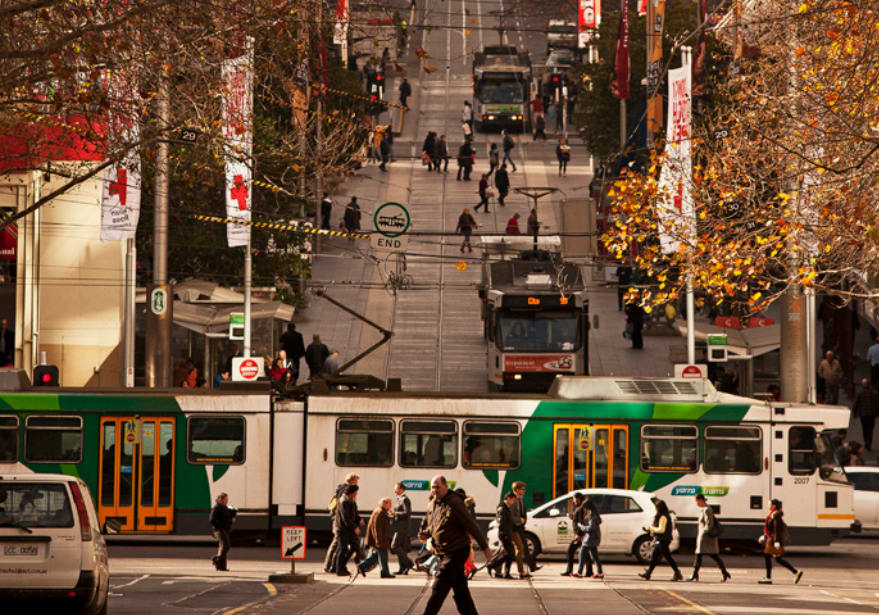New Public Transport discussion document released as part of City of Melbourne's transport strategy refresh
The City of Melbourne has released the latest discussion paper that is being used to inform submissions on its transport policy refresh.
The daily population of the municipality is projected to grow from 900,000 today to 1,400,000 by 2036 and the council is looking to refresh all facets of its transport strategy.
Two weeks ago, the first two discussion papers were released - they're focused on walking and space-related aspects.
The latest document is solely focused on public transport and covers all the major modes of public transport that runs through the municipality.
A world-class public transport system is critical to a liveable, prosperous and sustainable city. Mass public transport is the most space-efficient means of moving high volumes of people across medium to long distances.
The City of Melbourne manages much of the interface with the public transport network: our streets. The experience of people on the streets in our city, including at interchanges and transfer points, impacts on the reputation of the city.
Our public transport network is under strain. The number of people living, working and visiting the municipality is growing faster than can be accommodated by current services and committed public transport projects. The crucial Melbourne Metro Rail Tunnel will be at capacity soon after completion.
Rail-based transport networks feature heavily, as you'd expect, and the discussion paper includes the above infographic which looks at the patronage on the rail network in 2011 and then the projection of demand in 2031 and the capacity impacts that the Metro 1 - now under construction - and Metro 2 projects will have.
The discussion paper even goes on to say 'the crucial Melbourne Metro Rail Tunnel will be at capacity soon after completion'. Assuming the projections in the paper come to fruition, it's a sobering thought, but not surprising given the slow, medium or high population growth scenarios which the ABS publishes for all major centres.
Not mentioned in the discussion paper or made plainly obvious in the rail capacity projections is the city-loop reconfiguration project which is present in the Network Development Plan of 2012/2013 and again features in Infrastructure Victoria's long-list of analysed projects.
The City Loop reconfiguration project is intended to link the Frankston & Craigieburn lines together through the two city loop tunnel those lines currently use (by changing tunnel entrances and connections at North Melbourne & Richmond). The same project will make it possible to link the Sandringham and Upfield lines that would run via Southern Cross and Flinders Street.
The discussion paper states that tram priority measures - separating trams from car lanes, adding tram priority at signalised intersections etc - should be 'supercharged'.
Familiar statistics are outlined in the paper as well - 80% of the tram network mixes with car traffic - and Zurich is used as a comparison in the tram priority stakes.
The rail vehicles operating on tram network in Zurich, according to the paper, only spend 6% of their time at intersections compared to 17% in Melbourne. The paper points out that a project begun in the 1980s gives trams 'absolute priority at intersections and allocates dedicated road space to trams, with the ideal situation being one where trams need only stop to set down or pick up passengers'.
It sounds wonderful - trams with absolute priority - perhaps our issue is that the council isn't the only responsible authority for roads in Melbourne - VicRoads or the state government will probably have other ideas - and that's perhaps one of our fundamental issues.
To read the latest discussion, paper, see participate.melbourne.vic.gov.au.
